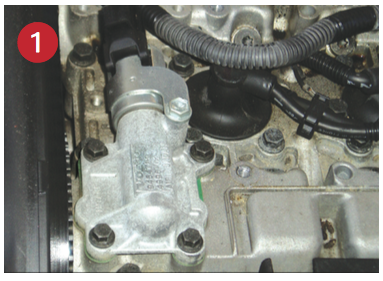Training specialist, Steve Carter, looks at a 2000 Volvo S40 1.6L 16V unable to pull away.
I was recently asked to take a look at a 2000 Volvo S40 1.6L 16V that was having some issues. The problem with this vehicle was its frequent, but random, inability to pull away from a standstill. This was not a transmission or clutch problem, but appeared to be the inability of the engine to develop sufficient torque from idle speed. Even applying a significant amount of throttle still made pulling away problematic and, as stated previously, this problem wasn’t continuous.
This particular engine is equipped with the EMS 2000 engine management system and doesn’t incorporate fly-by-wire, so no throttle body adaption was available. Any idle adjustment is made by means of a small grub screw. However, the idle speed, most of the time, appeared to be within specification.
As you can see in Fig 1, this engine is equipped with continuous variable valve timing. The camshaft actuator receives its instructions from the engine ECM, which causes the actuator to channel engine oil, under pressure, to alter the camshaft’s position, creating continuous variable valve timing. On closer inspection of the actuator, significant amounts of solidified engine oil deposits could be seen in the galleries within the actuator. These deposits were cleaned out with a degreasing agent, and the problem was eventually resolved.

As this case shows, sometimes the real problem lies beyond the ability of the ECU to understand, other than to tell you that something is wrong. That’s where knowledge of systems and components is vitally important.
DON’T MISS STEVE AT MECHANEX 2017!
A respected and experienced automotive training specialist, Steve Carter will be advising technicians on how hybrid and electric vehicles work and how your business should prepare for servicing these vehicles. If you want to find out how you can take a piece of this growing market, then it’s a ‘must-attend’ event!










